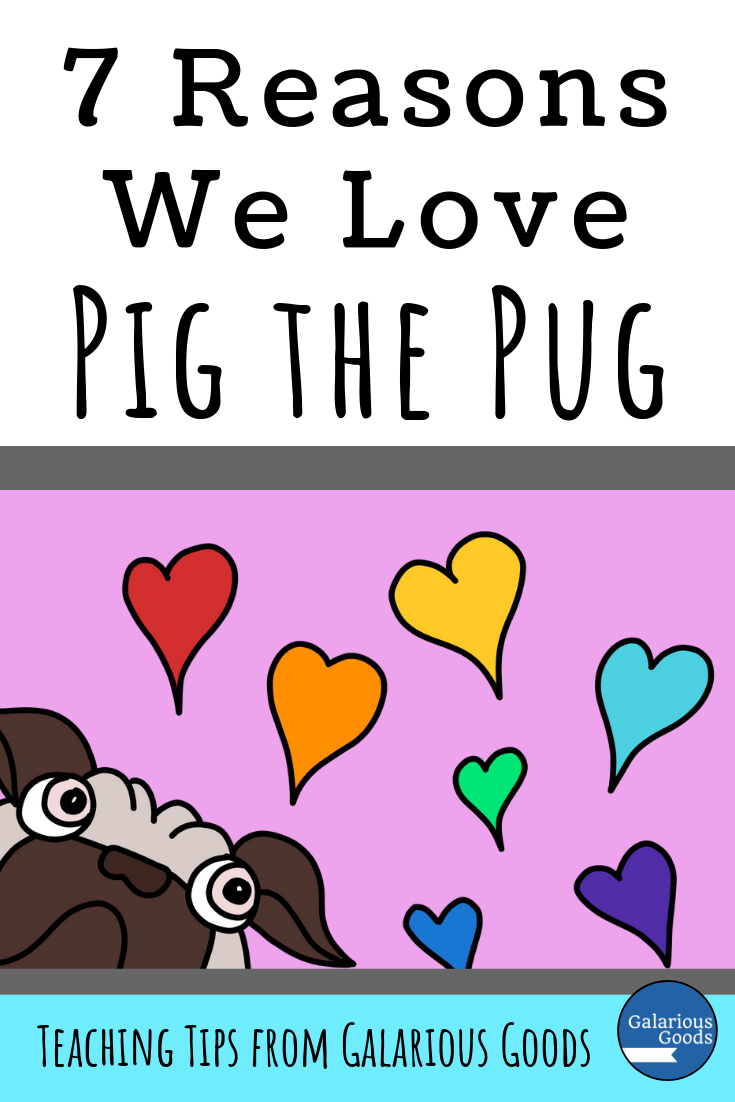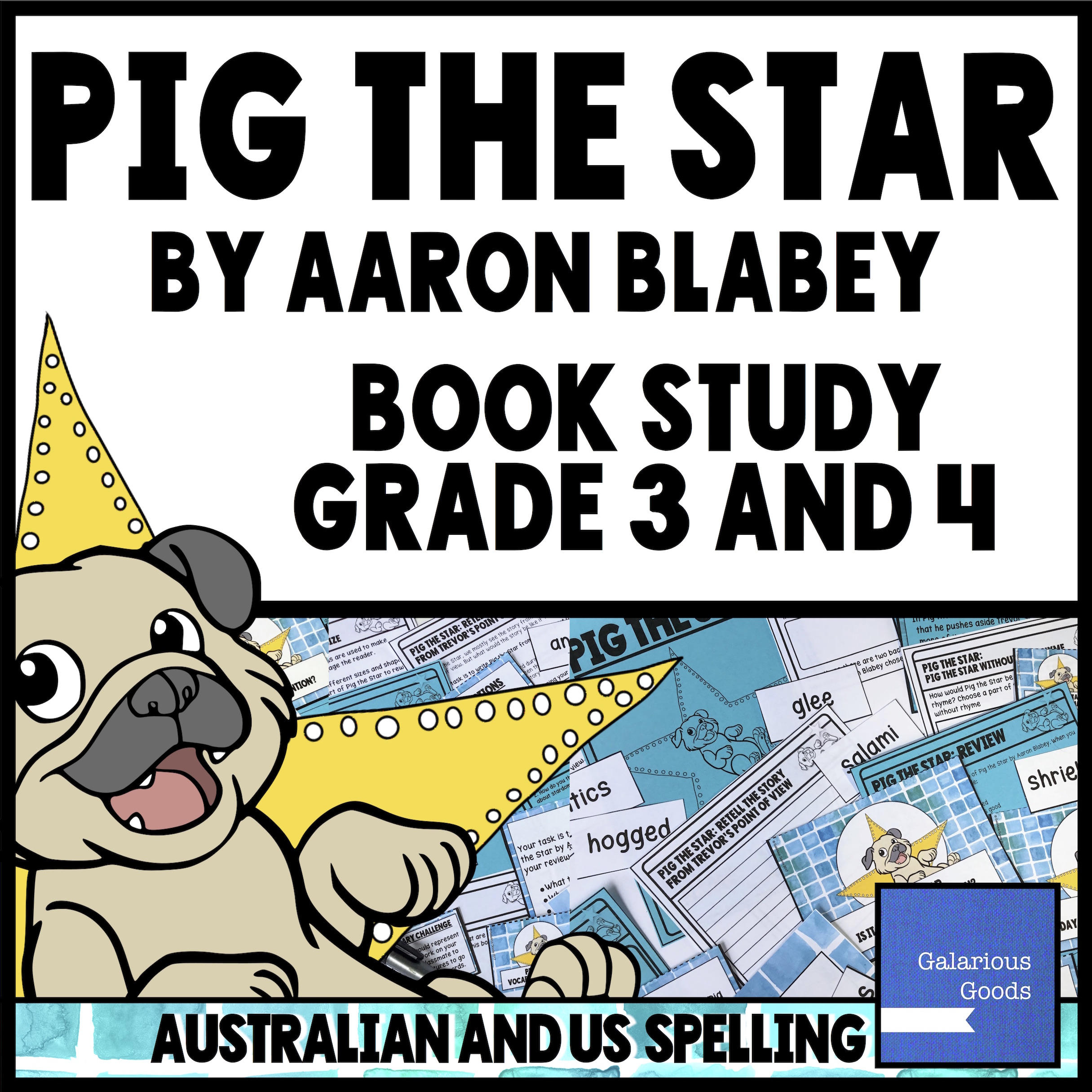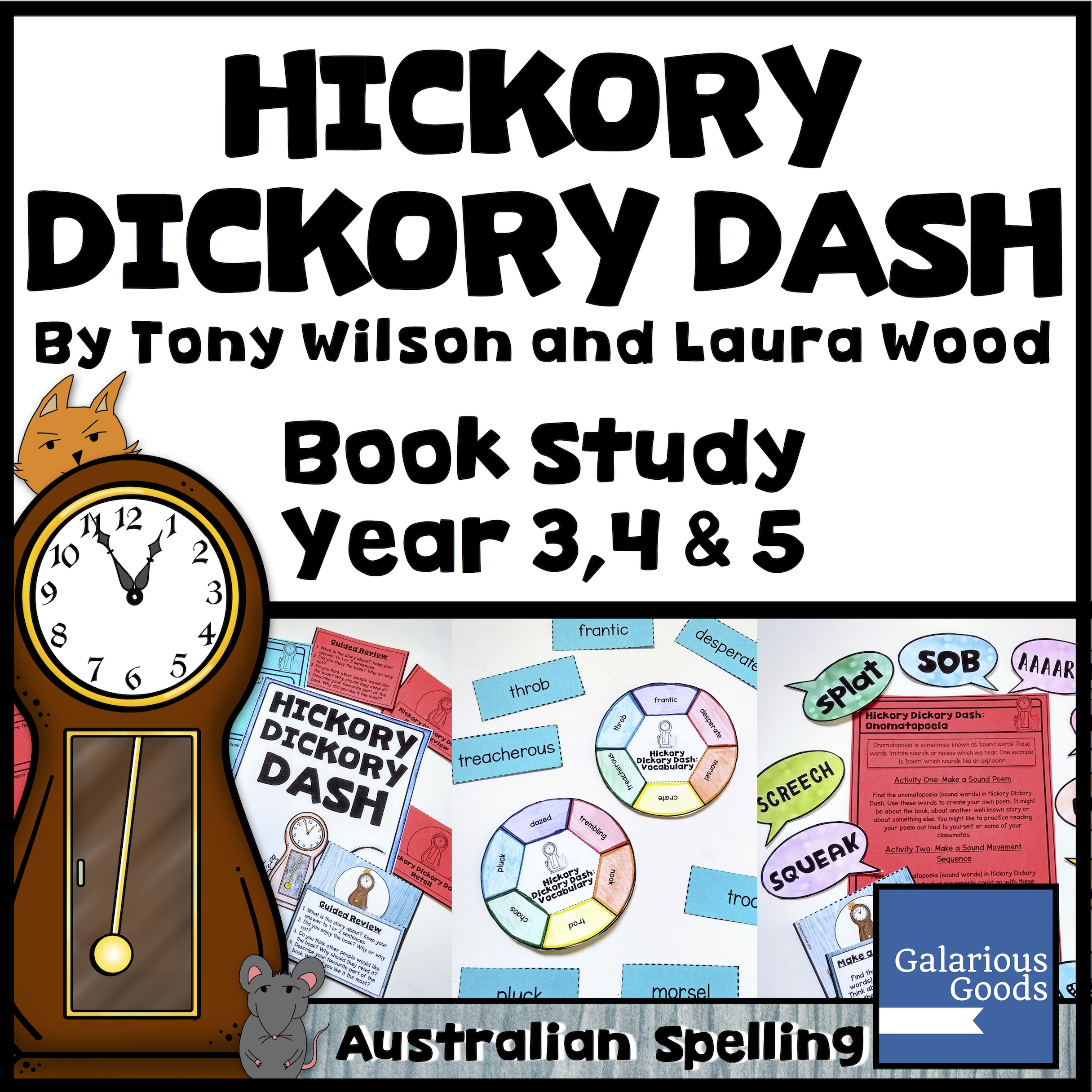7 Reasons We Love the Pig the Pug Books
/My family loves the Pig the Pug books by Aaron Blabey. We love them so much that both my children have dressed as the not-so-well-behaved but lovable dog for Book Week. But what is it we love so much about Pig? My son sat down with me to put together some reasons we love Pig - and some ways you can explore that love in the classroom.
1. We Love the Lessons . . .
Every Pig book comes with a little lesson (or two) to learn - whether it’s sharing our toys with others, telling the truth about our misdeeds or sharing the spotlight.
While the lessons are pretty broad - and sometimes pretty specific to Pig (it’s unlikely our children will be eating their food bowls any time soon!), they’re a great starting place for further conversation about what good and considerate behaviour looks like. We can pose questions like what does a winner look like? Is it necessary to share everything? Is it better to get difficult things over and done with - or just try to avoid them.
2. . . . and How Pig Always ‘Learns His Lesson’
Pig always ‘learns his lesson’ by the end of the book - which is another aspect students can discuss. Does he really learn his lesson. Do students honestly think he won’t repeat his mistakes. And since he usually behaves well when he’s injured and physically unable to misbehave - what might happen when the bandages come off and he is well again. Students can follow this train of thought and develop their prediction skills!
3. We Love the Humour
These are really funny books! They’re a dream for teachers and parents who are reading them out loud, as you can explore with voices (take care with Pig - the shouting can be a problem!) and the funny pauses as you turn pages. But even when you are reading them to yourself, you can’t help but wonder what hilarious hijinks that pug will get up to next . . . and what hilarious trouble he will find himself in.
A lot of the humour comes from the ridiculous nature of the trouble - we know it’s unlikely that these things would really happen to a dog - but it’s funny to imagine that they might. Students can explore writing their own ridiculous paragraphs or stories, seeing how far they can stretch their story before they lose their reader. They can also look for other examples of ridiculous humour in books - the books where the author just has fun with the reader!
4. We Love the Repetition
There’s something terribly comforting about opening a brand new Pig the Pug book and seeing those familiar words . . . ‘Pig was a Pug . . . “
The Pig books follow a comfortable formula which makes them perfect for students developing an understanding of how stories can be structured and for students who like to look for connections between different texts. The familiarity of the stories can also help students concentrate on the details of the book - like the language or the specifics of this particular story - giving students a framework to work within.
It also gives new and pre readers the opportunity to join in and read with the story - they know this bit! They’ve read it before. It can be a wonderful confidence boost or a way to engage with a text because you’re really reading it.
This repetition can be used in writing lessons as well. Students can brainstorm ways for Pig to get himself into trouble and then use the framework to create their own Pig stories. Or they can create their own framework as a class or group and then write a class series of stories which work into that framework.
5. We Love Trevor
Poor Trevor. While Pig is rampaging his way through the books, Trevor is the ultimate straight man. He’s kind, thoughtful, honestly cares about Pig . . . he just wants things to go right for him occasionally. Who didn’t cheer when Trevor was selected to be a star?
Trevor shows us what Pig could be like if he would just learn how to behave. He also shows us how a character can react to Pig’s antics. This is a great way for students to explore side characters - the characters who observe many of the actions rather than getting directly involved in them (unless they can’t help it!)
Students can also imagine what Pig’s world might be like if Trevor wasn’t around. How would that make things easier for Pig? How would it make things harder?
6. We Love the Language
I LOVE the way vocabulary is used in the Pig the Pug books. Aaron Blabey refuses to talk down to his young audience, using a wide range of words and terms from ‘quivering’ to ‘sook’. It’s not all big words - there are plenty of smaller, easier to digest words - but this is a great way to explore great words and the way they can be arranged and manipulated to create rhythm, rhyme - and a really funny story.
There are so many vocabulary activities you can do with this book - whether it’s exploring the different words or phrases around the word ‘pig’ or using vocabulary folding activities to record some of the great words you can find in the books. Students can create their own word walls of ‘Pig the Pug’ words and try to incorporate them in their own writing.
7. And We Love the Illustrations
When I had to come up with a Book Week costume on fairly short notice, we decided on Pig the Pug - with a crocheted hat doing the majority of the work. As my son walked out to the car to head to kindy, his friend from across the road yelled out ‘It’s Pig the Pug!’ - those eyes and ears immediately tell you who you’re dealing with!
As well as Aaron Blabey’s iconic Pig and Trevor illustrations, the books are filled with little drawings which expand the story - and sometimes fill in the spaces between the words. My particular favourite is Pig the Star, where we see Pig and Trevor dressing up as a wide range of famous people.
Students can explore how Aaron Blabey uses illustrations to tell the story - and how the story might change if there were no illustrations at all. They can also look at how they can tell their own stories - using just illustrations, or by combining illustration and words to create a complete tale.
Aaron Blabey has so many wonderful books, and I have a hard time deciding on a favourite. But there is definitely a place for the naughty Pig the Pug in your classroom - and many different ways you can explore these stories with your students.

















